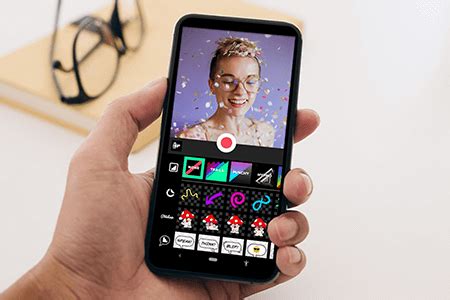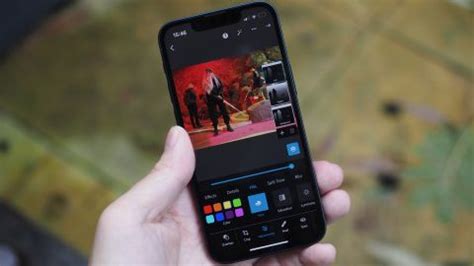When it comes to enhancing your photos, choosing the right image editing software is crucial—especially when you’re on a budget. Fortunately, there are several top-tier, free image editing software options available that offer powerful tools and capabilities without compromising on quality. In this article, we’ll explore some of the best free image editors that not only help you create stunning visuals but also ensure your computer’s safety. From user-friendly interfaces to robust security measures, these programs stand out for their functionality, performance, and compatibility across different operating systems. Dive in to discover which software
zokablog.com will lead a thorough examination of this topic.
1. Overview of top free image editing software options.
In today’s digital age, free image editing software has become increasingly sophisticated, offering a range of tools that rival even some paid alternatives. These programs provide an accessible way for photographers, designers, and hobbyists to enhance their photos without breaking the bank. Whether you’re looking for basic editing features like cropping and color correction, or more advanced tools such as layers and filters, there’s a free option to meet your needs.
One of the most popular choices is GIMP (GNU Image Manipulation Program), a powerful open-source editor that offers a wide range of features similar to Adobe Photoshop. Another excellent option is Paint.NET, known for its simplicity and speed, making it ideal for beginners and those who need to perform quick edits. For those who prefer a browser-based solution, Pixlr offers a robust online editing experience with an intuitive interface and a rich set of tools.
Each of these software options has its strengths, catering to different levels of expertise and specific editing needs. Some are more suited for professional-grade projects, while others excel at providing user-friendly environments for quick and straightforward edits. No matter your skill level or project requirements, these top free image editing software options offer a great starting point for anyone looking to enhance their photos safely and effectively.

2. Key features of each software, such as tools and capabilities.
Each free image editing software offers a unique set of features that cater to different user needs, from basic edits to complex graphic design projects. GIMP, for example, is renowned for its comprehensive toolset that includes advanced features such as layers, masks, and customizable brushes. It also supports a wide range of plugins and extensions, allowing users to expand its capabilities even further. GIMP’s extensive features make it suitable for professional-grade projects, including photo retouching, image composition, and digital art creation.
Paint.NET, on the other hand, is celebrated for its simplicity and ease of use. It provides essential tools such as crop, rotate, and resize, along with more advanced features like layers and special effects. The software’s straightforward interface makes it an excellent choice for beginners or users who need to perform quick edits without a steep learning curve.
Pixlr offers a web-based solution that combines convenience with a robust set of editing tools. It includes features like filters, overlays, and effects, as well as basic tools like crop and color adjustments. Pixlr’s browser-based nature means it’s accessible from any device with internet access, making it a versatile option for users on the go.
These software options provide a balance of powerful tools and user-friendly interfaces, ensuring that users can enhance their photos effectively and efficiently.

3. User-friendliness and ease of use.
When it comes to user-friendliness, each of these free image editing software options has something to offer, making them accessible to a wide range of users, from beginners to experienced editors. Paint.NET stands out for its intuitive interface, which is clean and easy to navigate. The layout is straightforward, with clearly labeled tools and a minimal learning curve, making it ideal for users who need to perform basic edits quickly and efficiently.
GIMP, while powerful, is slightly more complex due to its extensive range of features. It may require a bit more time to master, especially for users who are new to image editing. However, once familiar with the interface, users can unlock a high level of creative control and customization, which makes GIMP a favorite among more experienced users.
Pixlr offers a user-friendly experience through its web-based platform, which doesn’t require any downloads or installations. Its interface is sleek and modern, with drag-and-drop functionality that simplifies the editing process. Pixlr’s design is particularly appealing for those who prefer working directly in their web browser, allowing for quick edits on the fly.
Overall, each software provides a different level of ease of use, catering to various user preferences and experience levels.

4. Compatibility with different operating systems.
Compatibility is a key factor when choosing image editing software, and these top free options cater to various operating systems, ensuring accessibility for a broad user base. GIMP, known for its versatility, is compatible with Windows, macOS, and Linux, making it an excellent choice for users across different platforms. Its cross-platform availability ensures that users can maintain consistent workflows regardless of the operating system they use.
Paint.NET, however, is specifically designed for Windows. This focus allows it to be highly optimized for the Windows environment, providing smooth performance and seamless integration with Windows features. While this limits its accessibility for users on macOS or Linux, it remains a top choice for Windows users who need a reliable and efficient editing tool.
Pixlr, as a web-based application, offers the most flexibility in terms of compatibility. It can be accessed from any device with an internet connection, whether on Windows, macOS, Linux, or even mobile operating systems like iOS and Android. This makes Pixlr an ideal option for users who require the ability to edit images on the go, without being tied to a specific operating system or device.
These options provide diverse compatibility, ensuring users can find the right software for their needs, regardless of their operating system.
5. Security measures and safety of downloading each software.
Security is a crucial consideration when downloading and using image editing software. GIMP, being an open-source program, is continuously monitored by a large community of developers who ensure that the software is free from malicious code. It’s available from trusted sources like the official GIMP website, reducing the risk of downloading harmful versions.
Paint.NET is also considered safe when downloaded from its official website or reputable sources like the Microsoft Store. The software is regularly updated to fix vulnerabilities and improve security, providing users with a reliable and secure editing tool.
Pixlr, as a web-based application, eliminates the need for downloading software altogether, which reduces the risk of encountering malware. Since all editing is done online, users are only required to ensure their browser and system are secure. Pixlr’s reliance on cloud-based storage means users should be cautious about uploading sensitive images, but the platform itself is considered safe for everyday editing tasks.
These options offer robust security measures, allowing users to edit their photos with peace of mind.
6. Comparison of editing functionalities and performance.
When comparing the editing functionalities and performance of these free image editing software options, each stands out in different areas, catering to varied user needs.
GIMP is the most feature-rich of the three, offering a comprehensive suite of tools that rival those found in premium software. Its support for layers, masks, and an extensive range of plugins makes it ideal for complex editing and graphic design tasks. However, due to its advanced capabilities, GIMP can be resource-intensive, requiring a higher-performing system to run smoothly, especially when working with large files.
Paint.NET, while not as feature-packed as GIMP, excels in delivering solid performance with essential tools like layers, special effects, and basic image adjustments. It’s optimized for speed and efficiency on Windows, making it an excellent choice for users who need to perform quick edits without taxing their system. Paint.NET strikes a balance between functionality and performance, making it accessible even on older or less powerful computers.
Pixlr, as a web-based editor, offers a range of tools that include filters, overlays, and essential adjustments. While it may not match the depth of GIMP or the speed of Paint.NET, Pixlr performs well in a browser environment, making it convenient for users who need to edit on the go. Its cloud-based nature allows for smooth performance across devices, though it may be limited by internet speed.
These software options offer a diverse range of editing functionalities and performance levels, catering to different user preferences and technical requirements.
7. User reviews and ratings to support software credibility.
User reviews and ratings play a significant role in assessing the credibility of free image editing software. GIMP is highly praised for its extensive feature set and versatility, receiving positive feedback from both amateur and professional users. Many reviews highlight its powerful tools and customization options, although some users note a steeper learning curve.
Paint.NET is consistently rated for its ease of use and efficient performance. Users appreciate its straightforward interface and reliability, making it a popular choice for those needing quick edits. The software often receives high ratings for its simplicity and effectiveness.
Pixlr garners favorable reviews for its accessibility and user-friendly design. Users enjoy its browser-based functionality, which allows for convenient editing without software installation. However, some reviews mention limitations in advanced features compared to desktop applications.
Overall, these software options have garnered positive feedback, each praised for their respective strengths and suitability for different editing needs.
In conclusion, choosing the right free image editing software depends on your specific needs and preferences. GIMP offers a robust set of advanced tools for professional editing, Paint.NET provides a user-friendly experience with essential features, and Pixlr delivers convenience with its web-based platform. Each option has its strengths, from powerful functionalities to ease of use and accessibility. By evaluating the features, performance, and user feedback, you can select the software that best suits your photo editing requirements while ensuring a safe and efficient editing experience.
zokablog.com